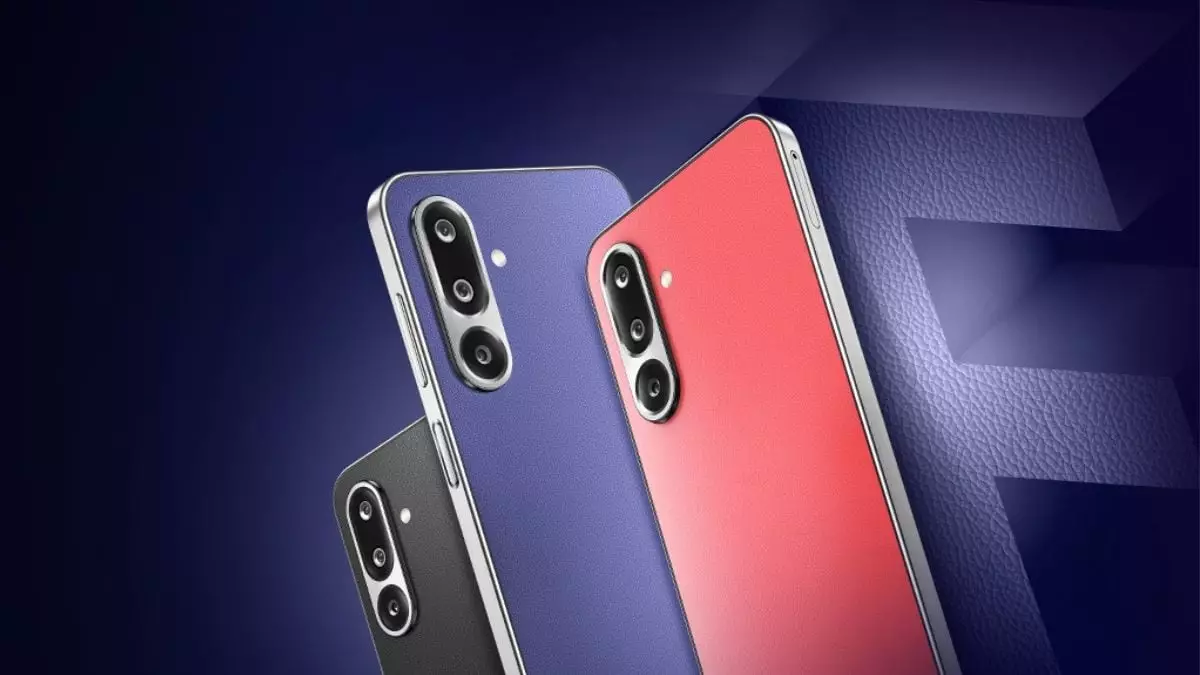Samsung has long positioned itself as a leader in the global smartphone industry, often balancing cutting-edge innovation with affordability. The recent launch of the Galaxy F36 5G in India exemplifies this strategy—offering a device priced under Rs. 20,000 that seemingly delivers high-end features. From a large 6.7-inch AMOLED display to AI-powered extras and a sizable 5,000mAh battery, this phone appears to tick many boxes for the average consumer seeking mainstream technology. Yet, beneath the glossy surface lies a series of compromises and questionable priorities. Does this device truly offer the value it claims, or does it serve more as a mere branding exercise rather than an innovation-driven breakthrough?
Design and Display: Appealing but Deceptively Slight
Samsung’s decision to incorporate a leather-finish rear panel in a sub-Rs. 20,000 device is a calculated move to excite the style-conscious Indian buyer. While premium feel is important, the real test is whether these aesthetic choices translate into durability and long-term satisfaction. The 6.7-inch Super AMOLED display with a 120Hz refresh rate is undeniably impressive at this price point, but consumers should be wary of the superficial allure. Corning Gorilla Glass Victus+ offers some protection, yet the fragile nature of smartphone screens often makes this an ounce of prevention rather than a guarantee.
Moreover, the waterdrop notch, deemed outdated by tech enthusiasts, signals that Samsung is prioritizing familiar, safe design choices over pioneering innovation. The device’s heft—nearly 200 grams—raises questions about ergonomics and user comfort over prolonged use, especially considering the device’s middle-of-the-road build materials.
Performance and Hardware: Overselling the Exynos 1380
At the heart of the Galaxy F36 5G lies the Exynos 1380 chipset, paired with a Mali-G68 MP5 GPU. While Samsung claims this combination supports smooth multitasking and gaming, their real-world performance often leaves much to be desired. The inclusion of 6GB or 8GB RAM, though seemingly sufficient, is a classic example of hardware inflation without meaningful gains. Such RAM options are standard in budget devices, but their real-world impact hinges on optimized software—a factor often neglected.
Equally troubling is the storage configuration. While microSD expansion offers some relief, the emphasis remains on internal storage, which is increasingly insufficient given modern media consumption habits. The vapour chamber for thermal management is a noteworthy inclusion, yet it cannot compensate entirely for heat generation during intensive tasks, potentially leading to performance throttling.
Camera System: A Good-Looking Front, Mediocre Performance Behind
Samsung touts a sizable 50MP primary sensor with optical image stabilization, suggesting impressive photography capabilities. However, in practice, hardware specs rarely translate to outstanding photo quality at this price point. The 8MP ultra-wide and 2MP macro sensors serve as mere fillers, and their real-world utility is limited. The front-facing 13MP camera might satisfy casual selfie takers, but nothing here fundamentally challenges the notion that flagship-level photography requires flagship-level investment.
What remains conspicuously absent is any innovation—no periscopic zoom, night mode, or AI-driven enhancements that significantly elevate user experience. Instead, what consumers get is a compromise—a camera setup that dazzles in specifications but often underwhelms in practice.
Software and AI Features: Overpromised and Underdelivered?
The promise of six years of Android updates and seven years of security patches appears generous on paper, but the value depends heavily on Samsung’s commitment to long-term support. Android 15-based One UI 7 introduces AI features such as Google’s Circle to Search and Gemini Live, yet these functionalities are often gimmicky and distract from the core user experience. Object eraser and AI Edit suggestions may sound futuristic but tend to be oversold, rarely living up to expectations during real-world use.
This raises questions about the true value of AI in budget devices—are they genuinely enhancing user productivity, or just adding a veneer of sophistication to devices that are otherwise ordinary? Samsung’s approach seems more about creating an impression of advanced tech rather than delivering meaningful innovation.
Battery and Connectivity: Basic Yet Slightly Overpriced
A 5,000mAh battery with 25W charging is standard fare. While it promises decent longevity, the real-world performance depends on underlying optimization—something Samsung can’t always guarantee. The inclusion of a side-mounted fingerprint sensor and multiple connectivity options are basic features that consumers now consider essential, not luxuries. Unfortunately, at Rs. 17,499 to Rs. 18,999, the price doesn’t quite match the actual innovation—or lack thereof.
Ultimately, Samsung’s Galaxy F36 5G tries to position itself as a flagship alternative in a saturated market. Yet, a closer examination reveals it is a collection of half-measures and incremental upgrades that largely serve to reinforce Samsung’s brand dominance rather than truly challenge or innovate. For consumers, especially those conscious of long-term value and sustainable tech, this device offers superficial appeal rather than substantive progress.

Leave a Reply